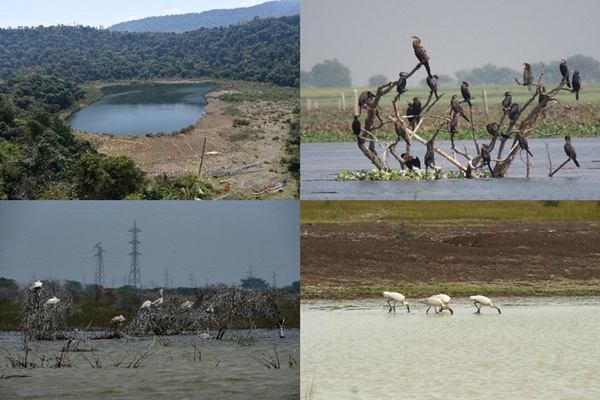India adds 4 new Ramsar Sites

- 01 Feb 2025
In News:
The Government of India has added four new Ramsar sites, increasing the total to 89, the highest in Asia and third globally. The newly designated wetlands include:
- Sakkarakottai Bird Sanctuary (Tamil Nadu)
- Therthangal Bird Sanctuary (Tamil Nadu)
- Khecheopalri Wetland (Sikkim)
- Udhwa Lake (Jharkhand)
This marks a significant milestone as Sikkim and Jharkhand have received their first Ramsar recognitions, while Tamil Nadu strengthens its lead with 20 Ramsar sites, the most among Indian states.
About the Ramsar Convention
- Adopted: 1971 in Ramsar, Iran
- Objective: Conservation and wise use of wetlands through local, national, and international cooperation.
- World Wetlands Day: Celebrated on 2nd February to promote awareness.
Key Highlights:
Therthangal Bird Sanctuary – Tamil Nadu
- Notified in 2010; covers 29.29 ha.
- Crucial breeding and foraging site for waterbirds like Spot-billed Pelican, Black-headed Ibis, and Oriental Darter.
- Aids groundwater recharge and climate regulation.
- Part of the Central Asian Flyway.
Sakkarakottai Bird Sanctuary – Tamil Nadu
- Notified in 2012; spans 230.49 ha.
- Located near Gulf of Mannar; significant stopover for migratory birds.
- Hosts endemic species and near-threatened fauna like Lion-tailed Macaque and Giant Squirrel.
Khecheopalri Wetland – Sikkim
- Sacred lake revered by Buddhists and Hindus; called Sho Dzo Sho locally.
- Known as a wish-fulfilling lake.
- Birds prevent leaves from settling on the surface.
- Rich in avifauna: fishing eagles, Brahminy kites.
- Integral to ecotourism and biodiversity conservation.
Udhwa Lake – Jharkhand
- Comprises Pataura Jheel (155 ha) and Brahma Jamalpur Jheel (410 ha).
- First Ramsar site of Jharkhand; near Ganga River.
- Declared a bird sanctuary in 1991; attracts migratory birds from September onwards.
Falls under the Gangetic Plains biogeographic zone.
